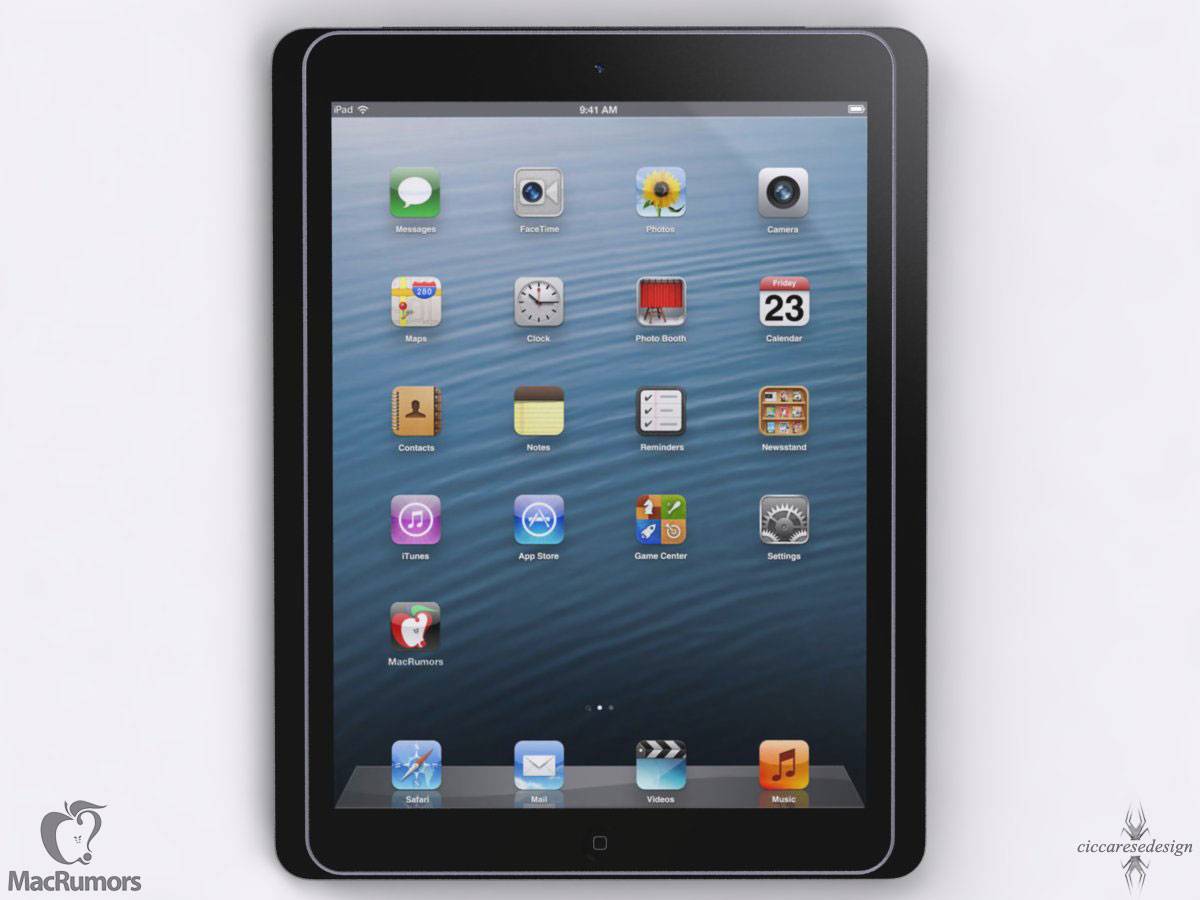iPad 5 urmeaza sa fie lansata in toamna acestui an de catre compania Apple, iar conform unor zvonuri noi, ea ar urma sa aiba un ecran construit folosind tehnologia GF2. Implementarea acestei tehnologii in ecranul tabletei permite realizarea unui produs mai subtire, mai usor, cu doar un singur LED pentru iluminare, iar aceasta schimbare ar putea imbunatati inclusiv autonomia bateriei. LG Display, Sharp si Samsung urmeaza sa furnizeze ecranele pentru viitorul model al tabletei, aceasta informatia confirmand zvonul de ieri care ne spunea ca Apple intentioneaza sa renunte la AU Optronics si sa utilizeze tehnologii ale Samsung.
Apple’s next-generation 9.7-inch iPad is expected to have 2,048 by 1,536 resolution and 264ppi, the same as that of the current model, according to industry sources. But the new device will have a slimmer bezel design and use GF2 touch screen technology, which will make it thinner and lighter. The sources added that the touch panel technology is expected to be supplied by TPK and GIS.
Separat de iPad 5, pentru iPad Mini 2 Apple inca ia in calcul utilizarea tehnologiilor oxide TFT sau LTPS, insa prima dintre ele nu ar reduce substantial consumul de energie al ecranului, un lucru pe care Apple il cere de la partenerii sai. Avand in vedere ca Apple inca nu a decis ce tehnologii urmeaza sa utilizeze in Retina Display-ul din iPad Mini 2, este clar ca lansarea este departe, mai ales ca LG DIsplay inca nu a ajuns la un acord cu Apple in privirea preturilor, iar Samsung nu are deocamdata suficiente resurse pentru a fabrica numarul de ecrane pe care il cere Apple.
Additionally, Apple is reportedly still choosing whether to use oxide TFT or LTPS backplane technology in its next-generation iPad mini. The sources said that Sharp is looking to provide Apple with Oxide TFT technology while LG and Samsung are leaning towards LTPS, as the Korea-based companies believe using oxide TFT does not result in significantly less power consumption. The sources also noted that LG has yet to agree with Apple on the pricing for oxide TFT, while Samsung does not have a significant amount of capacity for oxide TFT.






















